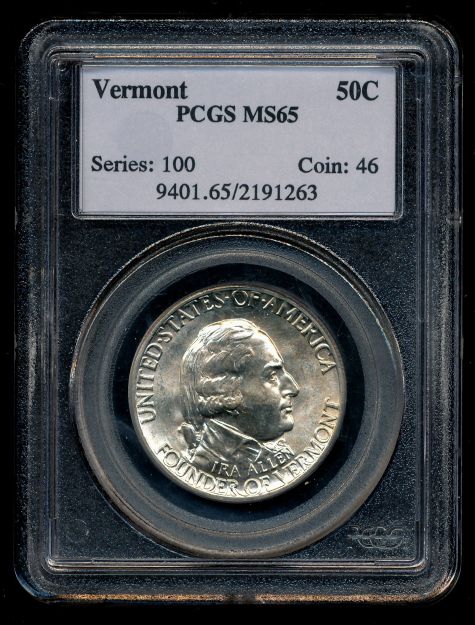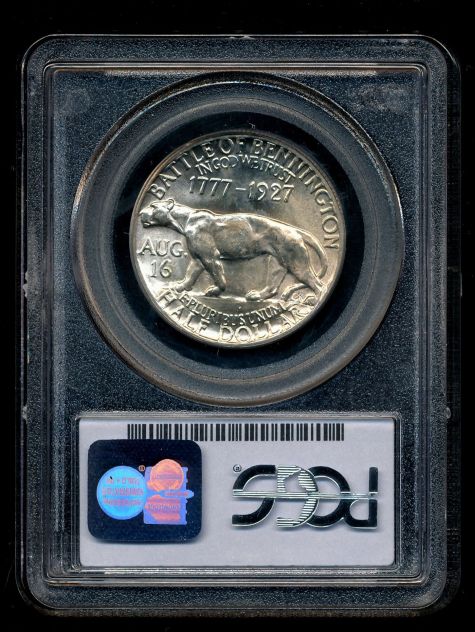Time to take a look at the other American-born personalities that appeared on classic-ere US commemorative coins of the 1920s.
If you'd like to catch up on my previous stories, see:
-
American-Born Personalities - Part I-
American-Born Personalities - Part II1925 Stone Mountain Memorial Half Dollar - Robert E. Lee and Stonewall Jackson

First up is Confederate General Robert E. Lee. Lee appeared on the 1925 Stone Mountain Memorial Half Dollar and the 1937 Battle of Antietam 75th Anniversary Half Dollar.
Lee was born in Westmoreland County, Virginia in 1807.
He attended the US Military Academy at West Point from 1825 to 1829, and ranked second in his graduating class! After West Point, Lee was assigned to the US Army Corps of Engineers.
Lee served in the US military from 1829 to 1861. He resigned from the US Army and transitioned to the Confederate Army after his home State of Virginia succeeded from the Union early in the US Civil War. Lee was originally given command of Virginia's military forces, but was named a General in the Confederate Army upon its establishment.
Though his commands were not always successful, he developed into a strong military leader and strategist and was eventually appointed as General in Chief of the Armies of the Confederate States (February 1865). On April 9, 1865, Lee surrendered his Army of Northern Virginia to Union General Ulysses S. Grant at Appomattox Court House in Virginia. Lee's surrender triggered the end of the US Civil War.
Note: Lee opposed the South's secession. He did not disagree that the South had grievances with the North, but did not believe splitting the Union was the best solution to resolve matters.1937 Battle of Antietam 75th Anniversary Half Dollar

As noted above, Lee also appears on the 1937 Battle of Antietam 75th Anniversary Half Dollar.
At the Battle of Antietam/Sharpsburg, the advance of Lee's Army of Northern Virginia was stopped by Union forces in what was the deadliest single day of the Civil War - there were nearly 23,000 combined casualties. Though Lee is depicted as the Confederate representative on the 1937 Half Dollar - along with the Union Army's George B. McClellan - significant credit for the battle's real-time actions is due Confederate Generals James Longstreet and Thomas "Stonewall" Jackson.
Also seen on the Stone Mountain coin, in the rear position facing the viewer, is General Thomas Jonathan "Stonewall" Jackson.
Jackson was born in Clarksburg, Virginia in 1824; today, Clarksburg is within West Virginia.
As did Lee, Jackson attended the US Military Academy at West Point (842 to 1846); he graduated ranked 17th in a class of 59. After graduation, he served in the US Army (1846-52) - fighting in the Mexican-American War (1846-48) and later took a position as an instructor at the Virginia Military Institute (VMI).
Following Virginia's secession from the Union, Jackson served as an officer in the Virginia Provisional Army and then was incorporated into the Confederate Army as a colonel. He rose in the ranks of the Confederate Army and was recognized as a strong tactician and enforcer of discipline within the troops he commanded.
He gained his "Stonewall" nickname during the First Battle of Bull Run/First Manassas, as a result of holding off the Union's assault. (The roots of the nickname, however, are a bit controversial with some believing it based on complimentary statement while others believe it grew from a sarcastic comment.)
During the course of the Civil War, Jackson rose to the rank of General.
In an ironic twist of fate, Jackson was killed as a result of mistaken friendly fire while returning to camp at Chancellorsville, Virginia following a reconnaissance mission. He was shot on May 2, 1863 and died on May 10; his left arm was amputated on May 2 due to injury from the gun shots received.
1926 American Independence Sesquicentennial Half Dollar - Calvin Coolidge

Up next is the 1926 American Independence Sesquicentennial Half Dollar. I discussed this coin in Part I of this series (Read it here:
http://goccf.com/t/475076American-Born Personalities - Part I[/url) due to its inclusion of George Washington. Time now to look at the other portrait on the coin - Calvin Coolidge.
Coolidge was born in Vermont on July 4, 1872; his birth name was John Calvin Coolidge, Jr. but he went by "Calvin" throughout his life.
Coolidge had a long career in public service. He began by filling multiple local positions in Vermont between 1898 and 1904. He next served in the Massachusetts House of Representatives (1907-09), was the Mayor of Northampton, Vermont (1910-12), a Massachusetts Senator (1912-15), the Lieutenant Governor of Massachusetts (1916-19) and the Governor of Massachusetts (1919-21).
He then served as the US Vice President under Warren G. Harding (1921-23) and became the 30th US President upon the death of Harding; after finishing out Harding's term, Coolidge was elected President and was in office until 1929.
1927 Battle of Bennington / Vermont Independence Sesquicentennial - Ira Allen

The last American-born personality to appear on a US commemorative coin in the 1920s was Ira Allen on the 1927 Battle of Bennington / Vermont Independence Sesquicentennial Half Dollar. His is definitely a "rise and fall" story.
Allen was born in the Connecticut Colony in April 1751. He is most-often associated with Vermont vs. Connecticut, however - and for good reason.
Ira Allen led a multifaceted life in Vermont. During his lifetime, he was a surveyor, a businessman, a large landowner, a soldier, a government official/statesman and an author (among other things). He fought in the American Revolution as a member of the Green Mountain Boys (under the leadership of his brother Ethan) and played an important, central role in early Vermont history, including holding various local government positions within independent Vermont and lobbying the US Congress for Vermont Statehood - achieved on March 4, 1791.
His donation of land in Bennington, VT (1791) was a primary reason the Vermont Legislature decided to locate its planned University of Vermont in Bennington. (Note: Allen also made a large financial pledge to the University - $4,000 British Pounds - that he, ultimately, was unable to fulfill.) Allen was, at times, a very wealthy man and, at other times, a debtor.
Allen spent time in prisons in England and France after an unsuccessful attempt to secure arms in Europe to bring to Vermont for support of a potential Canadian Rebellion.
Allen died and was buried in Pennsylvania (vs. Vermont) because he left Vermont (in 1801) to avoid imprisonment over the debts he incurred while fighting the mistaken charges of inciting insurrection against Britain through the supplying of arms to Irish rebels, and those debts incurred by his absence in Vermont during this time.
I'll begin my survey of the relevant coins from the 1930s in Part IV.For more of my topics on commemorative coins and medals, including stories about each of the coins discussed above, see:
Commems Collection. (Note: The "Design Discussions" link for each coin present a linked-list of additional topic threads.)




























